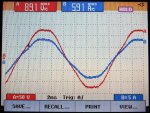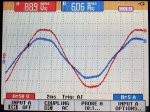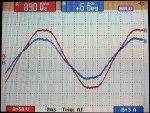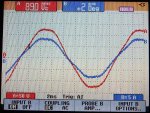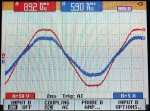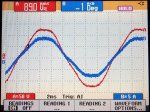181101-1136 EDT
SG-1:
I have an old clamp-on current transformer from about 1960. I put this on its 12 A range, ranges are 6, 12, 30, 60, 120, and 300.
Using a single burner heating coil, a resistance, 6 A @ 120 V, I saw a left shift of the current zero crossing compared to the voltage of about 1 mS, about 22 electrical degrees. On the 6 A range the shift was much greater, and a distorted waveform. On the 30 A range just a little less than 1 mS.
I believe your current transformer is introducing instrumentation error, and that the current zero crossing is really somewhat shifted to the right of what your plot shows. If the current waveform is shifted to the right some, then the plot zero crossings would make more sense. But then the voltage and current peak values are not aligned. An experiment with your bulb and a DC shunt will clarify what is happening.
.





